BREAKING THE SILENCE: Unveiling the world of sex trafficking in the Lone Star State

ABOUT:
According to the United States Department of Homeland Security, the human trafficking industry generates an estimated $150 billion and impacts around 27.6 million people per year globally.
The misconception that human trafficking only occurs in distant, less developed countries is just one of many. The reality is that human trafficking is everywhere, and it’s closer to home than many think.
In fact, it's right in front of us.
Texas has the second-highest trafficking rates in the nation.
Sex trafficking in Fort Worth, like many cities, often remains hidden from the public eye.
The issue is severely overlooked due to its graphic nature, and the false narratives on social media and news channels reinforce misconceptions.
Through my work, I’m hoping to debunk the myths and misconceptions about sex trafficking and how it operates.
Bringing awareness to this issue is the first step in influencing change. While educating our community of the hidden world of sex trafficking across the Texas borders is a small step, it’s the first of many in finding tangible solutions to fight against modern-day slavery.
"Working these cases has changed my perspective in the regard that I don't see commercial sex workers as prostitutes. I see them as people who are being forced to do something whether they admit it or not. I mean, how many girls growing up say, 'I want to sell my body for money. How many girls say that growing up? It's not something they want to do."
- Mark Laroche-PaHud, High Risk Trafficking Detective
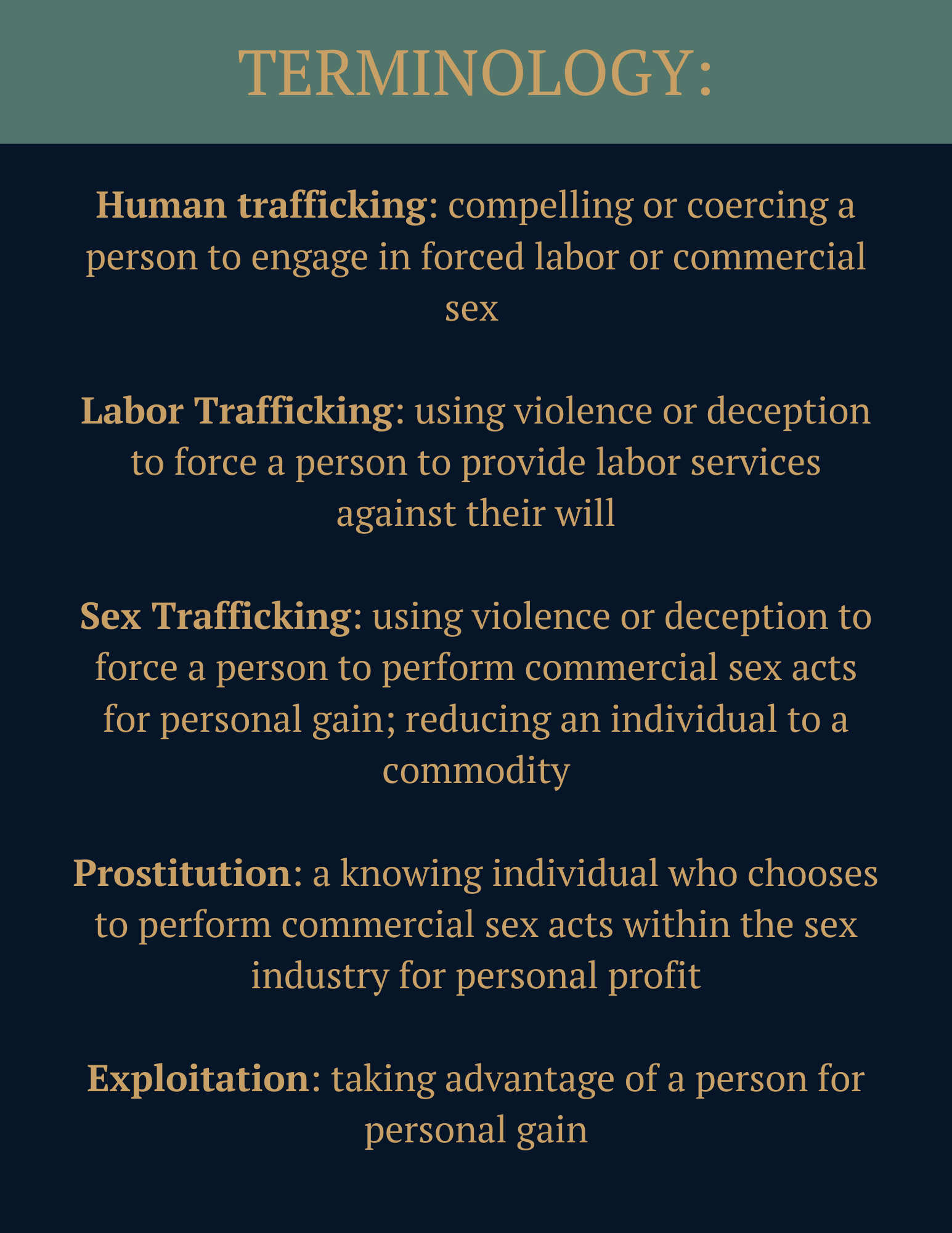
Recruitment and Operation: The Four Phases
I. Targeting
Traffickers—in this case, pimps—target victims more vulnernable to manipulation. Victim vulnerabilities are certain factors that increase a victim’s susceptibility to manipulation or coercion. These include living in poverty, a history of runaway attempts, unemployment, lack of education, homelessness, a history of sexual abuse or a history of trauma.
Most victims are runaways, many of them minors. Between the inability and lack of resources, many runaways are not searched for and do not make it back home. For example, it might be challenging for a single mother with six other children to devote the time and resources necessary to find her missing child.
Many victims struggle to provide for themselves, so they resort to the commercial sex industry to make quick cash. They might promise a person sex in exchange for a hotel room or somewhere to stay for the night, engaging in what’s called survival sex. Victims engage in this tactic because they feel as if they have no other option and typically have a history of sexual or domestic abuse.
In terms of physical location, many traffickers will find their victims at bus stops and transportation infrastructures or will groom them into a relationship through social media. Typically, three types of traffickers, or pimps, exist. The pimp’s actions and behavior determine which category he falls into.
The next phases in recruitment and operation are told as the perspective of a Romeo pimp, the most common of the three.
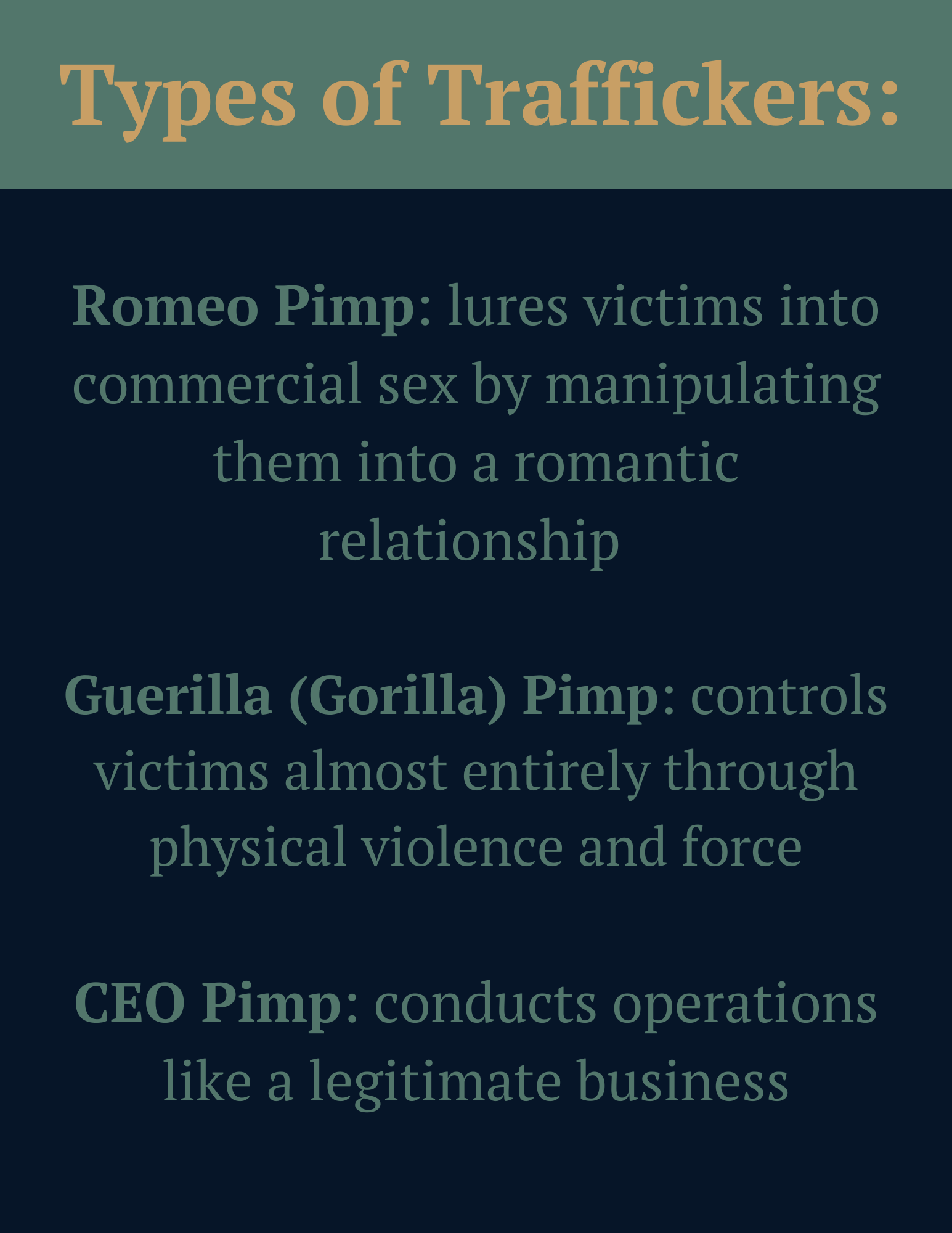
II. Grooming
During this stage, the trafficker gains the trust of the victim. This takes anywhere from just a few weeks to a few months. The trafficker creates a false sense of security by ensuring the victim’s safety and wellbeing. He offers quick and easy solutions as gestures of kindness and consideration. He might promise false employment opportunities, offer shelter or protection, shower the victim with words of affirmation, give gifts or offer promises of a better life. The trafficker takes on any role the victim needs fulfilled and will integrate himself into every aspect of the victim’s life.
After the trafficker convinces the victim of his faithfulness, the trafficker attempts to isolate the victim from loved ones by sabotaging her relationships, all while glorifying his relationship with her. By this point, most cases involve the trafficker and victim pursuing an romantic relationship.
The trafficker might tell the victim he’s the only person who truly loves her, that her family doesn’t care about her or that she needs to escape. The promise of a better life begins to look like a possibility.

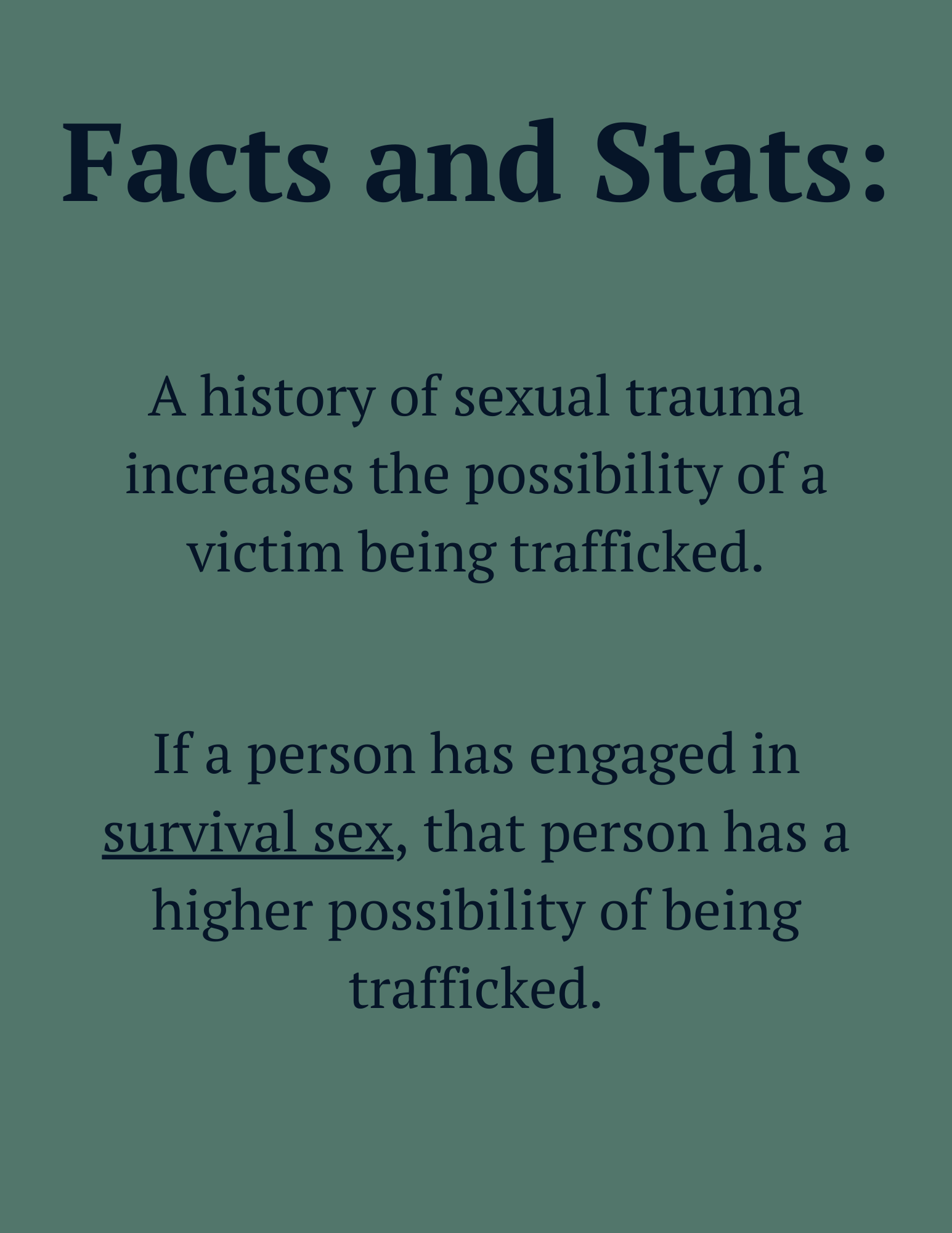
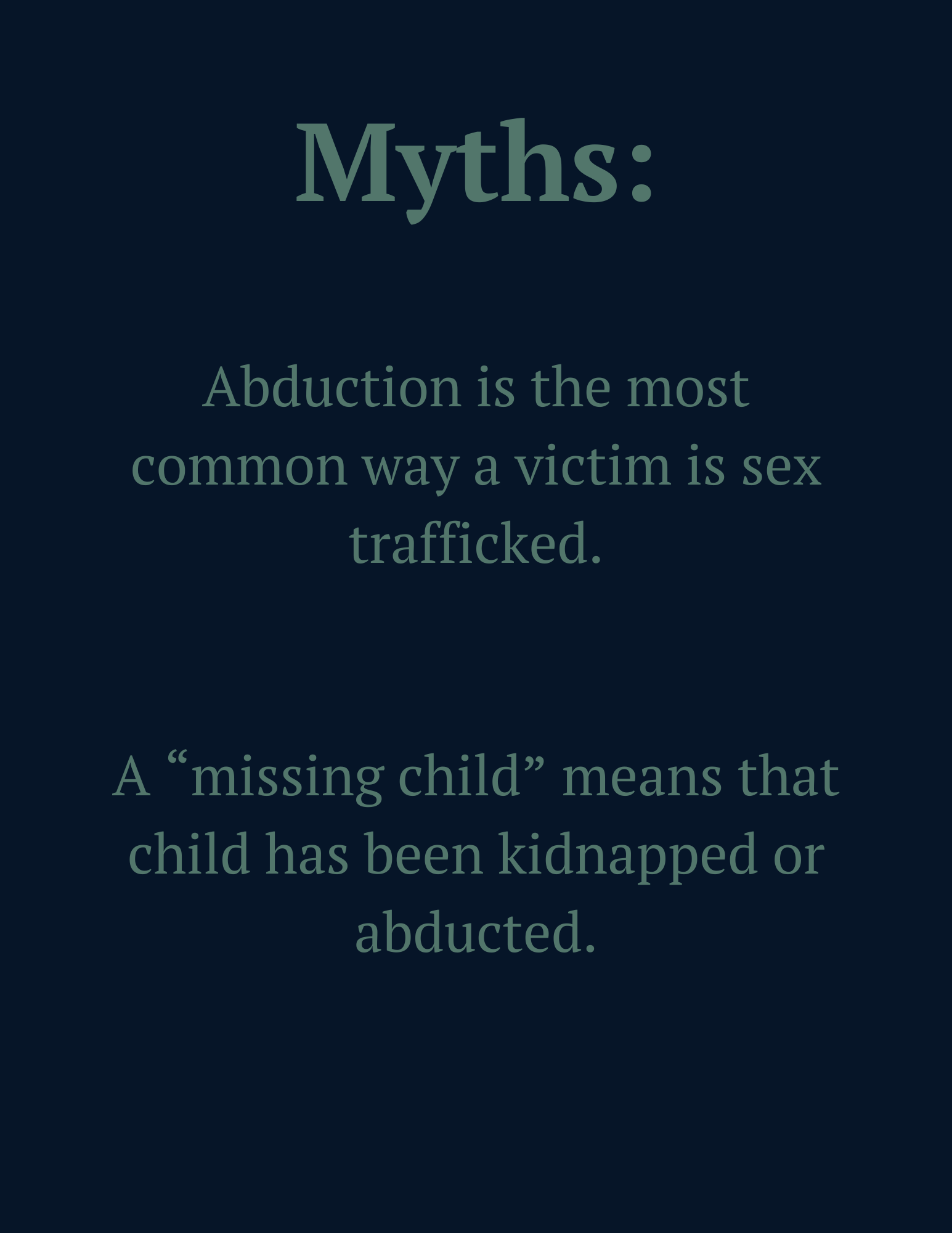
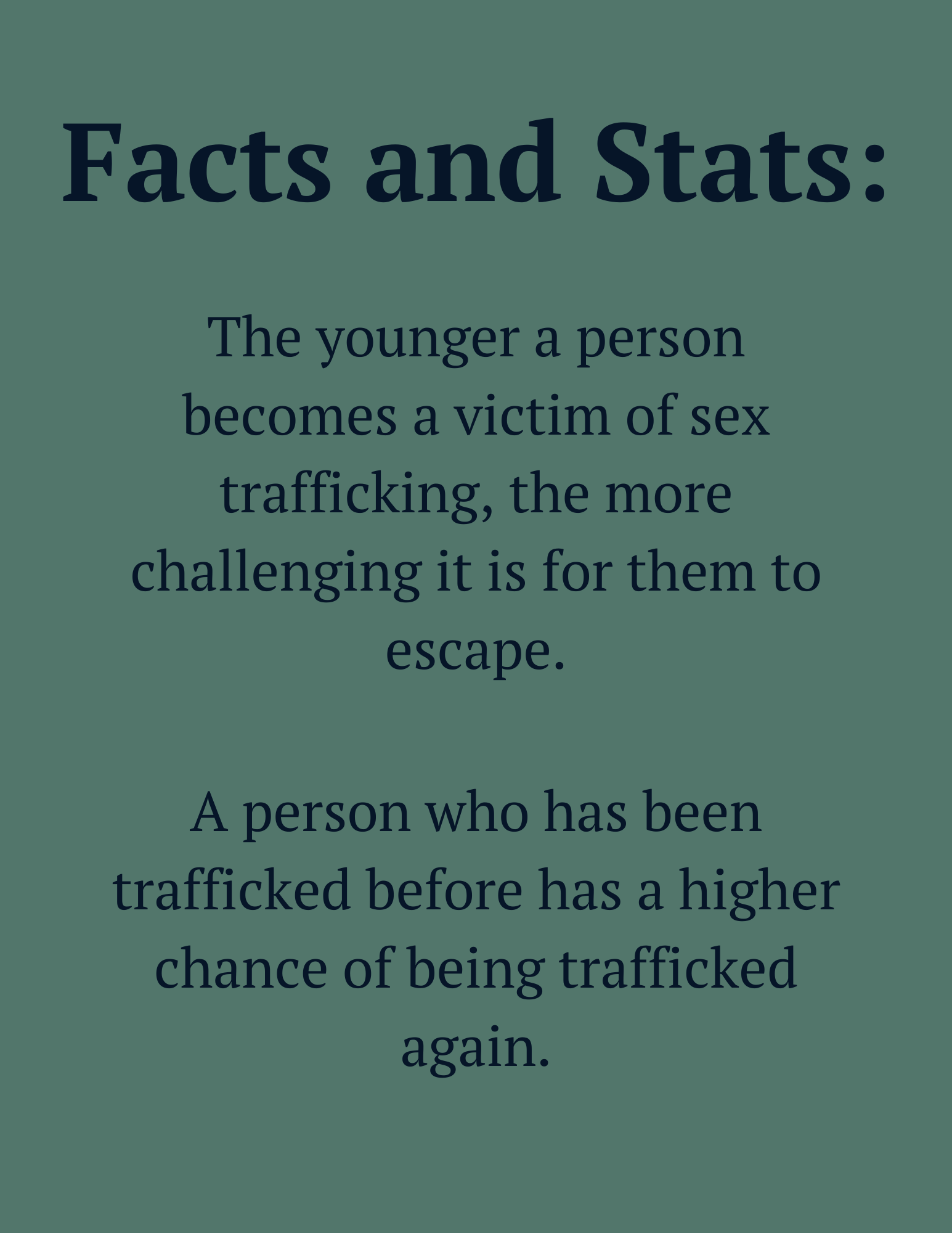
III. Recruiting
After compelling the victim to leave her previous situation, he allows her to live with him as his girlfriend. Throughout the next few weeks, it’s common to expect shifts in the trafficker’s behavior and intentions, exposing a more aggressive side the victim hasn’t seen before.
Once the trafficker is secure in his hold over the victim, he might start complaining of money issues.
He insists she needs to repay him for what he’s provided her, convincing her she owes him for his hospitality. The trafficker will suggest she "do a favor" for "one of his buddies," for example.
If the victim hesitates or becomes suspicious, the trafficker questions her loyalty to him and says something like, "it’s not that big of a deal."
The trafficker minimizes the situation by using indifferent language to downplay its severity and gaslights her into believing she’s in the wrong.
He might say things like, “you don’t love/trust me” or “I’ve done so much for you—just do this one thing for me.” By agreeing, the victim simply assumes she’s making the best choice for the sake of their relationship.
Note that the trafficker never explicitly asks the victim to engage in commercial sex acts or become a part of the sex industry. This is an intentional part of the trafficker’s ruse.
Another method of recruiting involves the use of blackmail. A trafficker might threaten to send a victim’s explicit photos to family members or loved ones if she refuses his request.
IV. Selling
"I was sold for $25,000."
- Survivor/Advocator Jasmine Meyers, Program Coordinator at Collaborative to End Human Trafficking
During the victim’s first days in the industry, the trafficker might let her keep the entire or partial amount of her earnings. He convinces her to perform more acts, emphasizing the simplicity of quick and easy cash. Gradually, the graphic nature of these sex acts increase, and her client base broadens. The victim recognizes a decrease in the amount of money she gets to keep. If she complains, the trafficker threatens, assaults and/or beats her, leaving her helpless and defenseless.
At this point, the victim has left everything behind to pursue a relationship she even doesn’t know is fraudulent.
Still unaware the trafficker’s promises were all just part of a ruse to coerce her into the sex trafficking industry, she believes she has no choice but to stay.
The process repeats itself.
The trafficker uses the same strategies to lure multiple girls in until he creates a ‘stable.' Nowadays referred to as a ‘family,’ this is a group of victims all under the control of the same pimp.
The girls are threatened, assaulted and abused repeatedly, victims of a vicious cycle called modern-day slavery.
The worst part is--they don't even know it.

Control Mechanisms: Violence
Traffickers regularly use violence as a way of controlling their victims. If the victims disobey the trafficker or his rules, the trafficker punishes them by threatening, abusing and beating them. When this occurs, the trafficker might beat the victim in front of the other girls to demonstrate the consequences of disobedience.
In one case, a trafficker "put a gun to her [victim] head and pulled the trigger on an empy barrel because she tried. to keep five bucks," Laroche-PaHud said. "That girl ultimately ended up being impregnated by her trafficker as another way of controlling her and her future."
A trafficker might beat a victim and force her back onto the streets if she fails to reach her quota, the set amount of money the trafficker requires of her. A common quota traffickers enforce is around $2,000/day.
There are no exceptions, even when clients refuse to pay, which is a common experience. Clients trick victims into meeting with them and show up, gun in hand, with the intention to rob and sexually assault the girl. Sometimes, they don’t even bring any cash with them.
Traffickers couldn’t care less about what happens to the victim—they only care about the money.
Pimp seemed much more fearful that another pimp will take their girl than that a customer then preventing the rape by a customer. That's their biggest concern.
If a victim returns to her trafficker after a rob and rape scenario, the trafficker might sexually assault her as well for not reaching quota.
Moreover, the trafficker might beat the bottom girl in front of the other girls to demonstrate the consequences of disobedience. A “bottom” or “bottom girl” refers to an appointed victim who supervises the other victims and ensures they’re following rules. She might collect the money to give to their trafficker and navigate the specifics of girls’ dates. Typically, this is the girl with the strongest trauma bond to her trafficker.
(Note: scroll down to The Psychological Effects to learn more about a trauma bond)
It’s important to note that, despite the bottom girl having a higher position, she is not immune from a trafficker’s abuse. In fact, the trafficker might occasionally beat the bottom girl simply to set an example for the others. This is another method the trafficker utilizes to assert his dominance.
Recruitment and Operation: The Role of Media
As social media becomes more prevalent, so does the online world of sex trafficking.
Traffickers recruit victims through social media platforms, such as X (formerly Twitter), Snapchat, Instagram, and Facebook, for example. They use social media, specifically What’sApp, to contact clients and schedule meetings.
In addition, social media is the most effective means in recruiting victims.
"A child is more at risk of being exploited in trafficked at home on Instagram than they are walking around a mall," Lindsey Lane, Senior Legal Counsel at Human Trafficking Institute, says.
In terms of advertising, traffickers install a program designed to sift through known sex sites and republish the ads on different sites. This means a high possibility of an ad existing on other sites even if someone takes down the original one. So, no matter how many sites law enforcement takes down, another site, guaranteed, will pop up in less than a day’s time.
Sometimes, victims aren’t even aware their trafficker posted their ads online.

